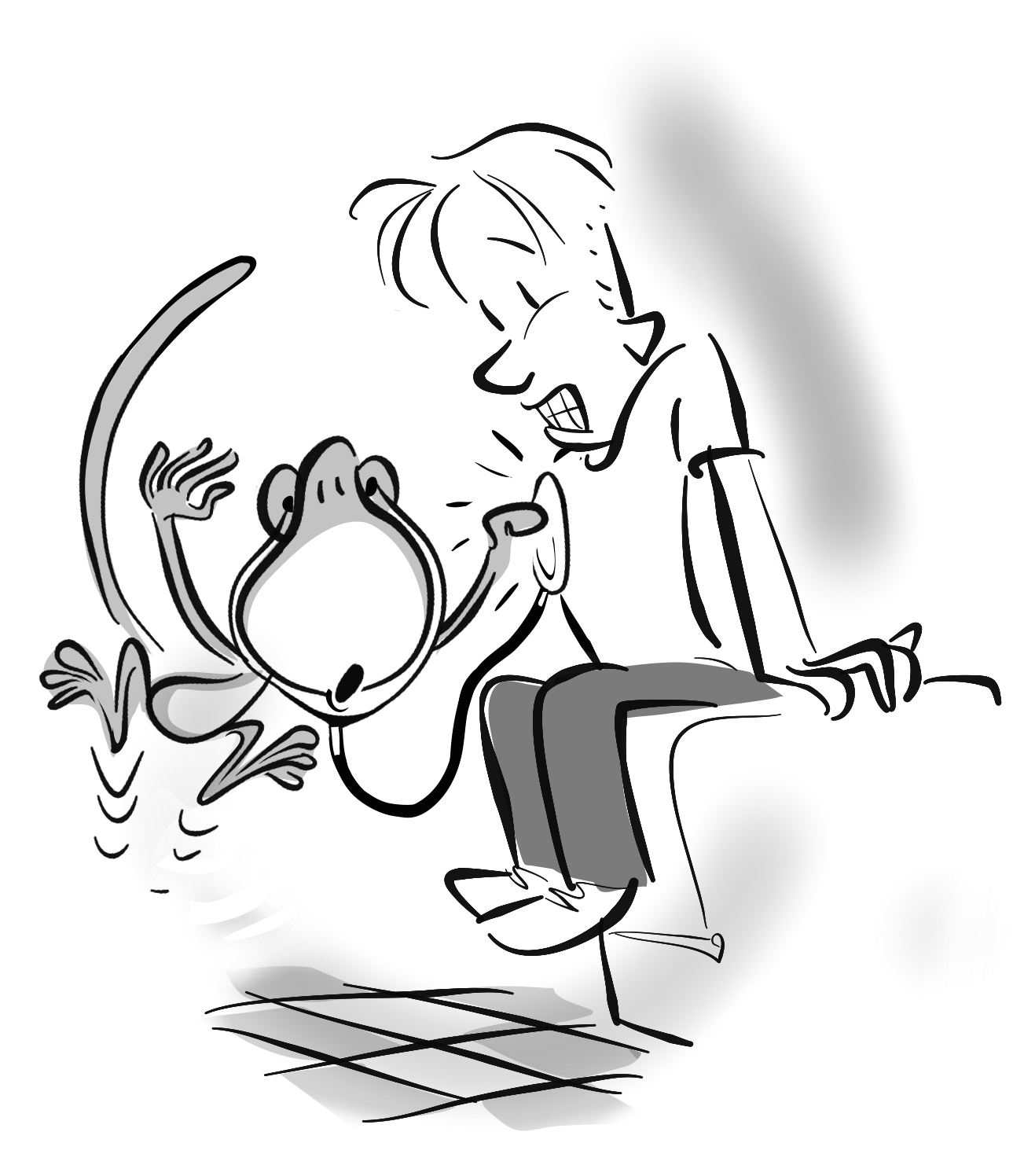By Jennifer Shannon, LMFT
 People often experience their first real panic attack in adolescence. This can develop into panic disorder, which is characterized by the fear of having another panic attack, and a misinterpretation of the danger of the sensations themselves. I find it very helpful for my teen client to understand the physiology of what is going on in their body so they can reinterpret the sensations more rationally. I use the metaphor of a Monkey Mind to represent the amygdala and the limbic system, which trigger the fight-or-flight sensations that are so easily misinterpreted.
People often experience their first real panic attack in adolescence. This can develop into panic disorder, which is characterized by the fear of having another panic attack, and a misinterpretation of the danger of the sensations themselves. I find it very helpful for my teen client to understand the physiology of what is going on in their body so they can reinterpret the sensations more rationally. I use the metaphor of a Monkey Mind to represent the amygdala and the limbic system, which trigger the fight-or-flight sensations that are so easily misinterpreted.
Here is a table of common misinterpretations of sensations, and the reality of what is really going on in the body.
| Sensation | Monkey Mind Misinterpretation | What’s Really Going On |
| Dizziness, light-headedness | What if I faint? | Anxiety causes changes in your breathing so that you take in more oxygen and breathe out more carbon dioxide. This mix helps fuel your big muscles so that you can outrun or fight a threat. It also makes you dizzy and lightheaded—but not faint! |
| Increased heart rate, heart palipitations, tightness in chest |
What if I am having a heart attack? | Your heart rate increases so that it can pump oxygenated blood to your large muscles so you can outrun or fight a threat. Your heart is a powerful muscle doing its job. |
| Vision changes | Things seem weird and unreal. What if I am going crazy? | When you are afraid, your eyes widen and your pupils dialate so that you are better able to see danger—even in darkness. This causes vision changes. |
Once a teen client is able to reinterpret panic sensations as physiologic and not pathologic, they are more likely to expose themselves to the sensations.
 Jennifer Shannon, LMFT, is author of The Shyness and Social Anxiety Workbook for Teens and The Anxiety Survival Guide for Teens and cofounder of the Santa Rosa Center for Cognitive-Behavioral Therapy in Santa Rosa, CA. She is a diplomate of the Academy of Cognitive Therapy.
Jennifer Shannon, LMFT, is author of The Shyness and Social Anxiety Workbook for Teens and The Anxiety Survival Guide for Teens and cofounder of the Santa Rosa Center for Cognitive-Behavioral Therapy in Santa Rosa, CA. She is a diplomate of the Academy of Cognitive Therapy.

 2024 Peace Playbook: 3 Tactics to Avoid Clashes with Your Partner
2024 Peace Playbook: 3 Tactics to Avoid Clashes with Your Partner